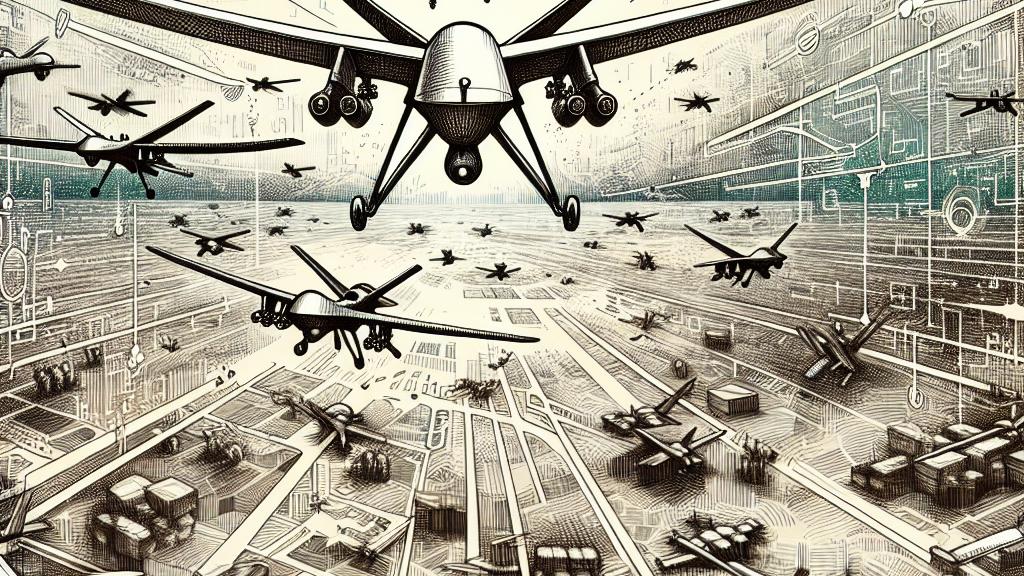Contrasting Drone Strategies of China and the US in Modern Warfare
Overview
- China is revolutionizing military strategy with its focus on affordable, mass-produced drones.
- The US is enhancing its capabilities through cutting-edge, versatile drone technology.
- Intensifying geopolitical tensions are driving both nations to explore innovative swarm drone tactics.

China's Game-Changing Asymmetric Warfare Strategy
In the dynamic arena of modern warfare, China stands out for its remarkable strategy revolving around unmanned aerial vehicles (UAVs). Rather than solely relying on high-tech platforms, which can be incredibly expensive, China emphasizes cost-effective mass production. This innovative approach enables the Chinese military to deploy swarms of drones that conduct various missions simultaneously and effectively. For instance, during a recent military drill, hundreds of drones worked in unison, demonstrating their effectiveness in reconnaissance and precision strikes. This strategic application, highlighted by analysts like Michael Raska, illustrates how China’s focus on adaptability and grassroots efficiency can potentially transform operational outcomes. By leveraging these drones, China aims not only to gain the upper hand but also to reshape the very nature of warfare itself.
The United States: High-Tech Integration Meets Tactical Superiority
On the other hand, the United States approaches drone warfare with its own distinct philosophy, prioritizing sophisticated technology and seamless integration into a broader military framework. By investing heavily in advanced drones such as the MQ-9 Reaper, the US not only enhances its strike capabilities but also enriches intelligence gathering and surveillance efforts. What sets this approach apart is its network-centric warfare strategy, whereby drones work in concert with other military assets—think fighter jets sharing real-time data. Recent combat simulations showcased this prowess, demonstrating how US forces can strategically coordinate their drones and fighters, creating a formidable military network. However, as critics observe, this reliance on high-tech systems raises questions about the feasibility of sustaining an edge over China’s rapidly expanding capabilities, where quantity can challenge quality.
The Future of Drone Warfare: Risks and Innovations Ahead
As we gaze into the horizon of future conflicts, the rise of swarm drone technology presents both thrilling possibilities and daunting challenges. Imagine battlegrounds where thousands of drone units, all equipped with artificial intelligence, operate in concert, adapting and strategizing on the fly. This dramatic shift from traditional combat methodologies is not merely speculative; rather, it is becoming a pressing reality that both China and the US are racing to harness. Nevertheless, the proliferation of such technologies could have far-reaching consequences, including the potential for rogue states to deploy similar capabilities, thus amplifying global instability. Experts like Margarita Konaev stress the urgency of establishing international norms to guide the use of drone swarms. As both superpowers forge ahead, they must balance the drive for military superiority with care—an essential endeavor in an increasingly unpredictable world.

Loading...